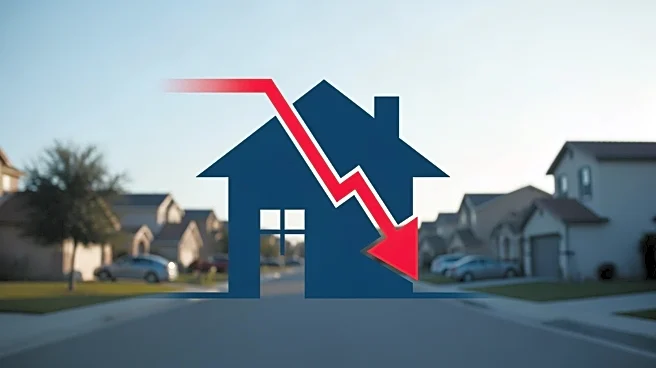What's Happening?
The real estate market in New Hampshire, particularly in areas like Manchester/Nashua, has been experiencing a shift. Despite being designated as the 'Hottest Real Estate Market' in the country by the Wall Street Journal/Realtor.com Housing Market Ranking,
the number of offers on homes is decreasing. The median home price in New Hampshire was $550,000 in August, with Rockingham County seeing even higher prices at $689,000. Realtors like Lee Ann Parks and John Rice have noted a trend towards selling more high-end homes, with fewer offers being made compared to previous years. The Federal Reserve's recent interest rate cut has not yet significantly impacted the market, as buyers remain cautious.
Why It's Important?
The softening of the real estate market in New Hampshire is significant as it reflects broader economic trends and consumer behavior. High home prices and limited offers suggest potential challenges for first-time buyers and those looking to relocate. The decrease in offers could indicate a cooling market, which may affect local economies reliant on real estate transactions. Additionally, the Federal Reserve's interest rate cut could influence future market dynamics, potentially making homes more affordable but also driving up prices due to increased demand. This situation highlights the delicate balance between affordability and market activity.
What's Next?
As the market continues to adjust, realtors and brokers may need to adapt their strategies to attract buyers. The Federal Reserve's interest rate decisions will be closely watched, as further cuts could stimulate the market or exacerbate affordability issues. Realtors like Parks and Rice may see changes in buyer demographics, with more interest in second homes or properties requiring renovation. The 'lock-in' effect, where homeowners with favorable interest rates are reluctant to sell, could also influence inventory levels and market activity.
Beyond the Headlines
The current real estate trends in New Hampshire may have deeper implications for societal shifts, such as young adults living with parents longer due to high housing costs. The market's reliance on high-end sales could widen economic disparities, affecting local communities and essential workers. Additionally, the interest rate environment may encourage more construction and remodeling, impacting local economies and the housing landscape.













